Japanese etiquette for dining
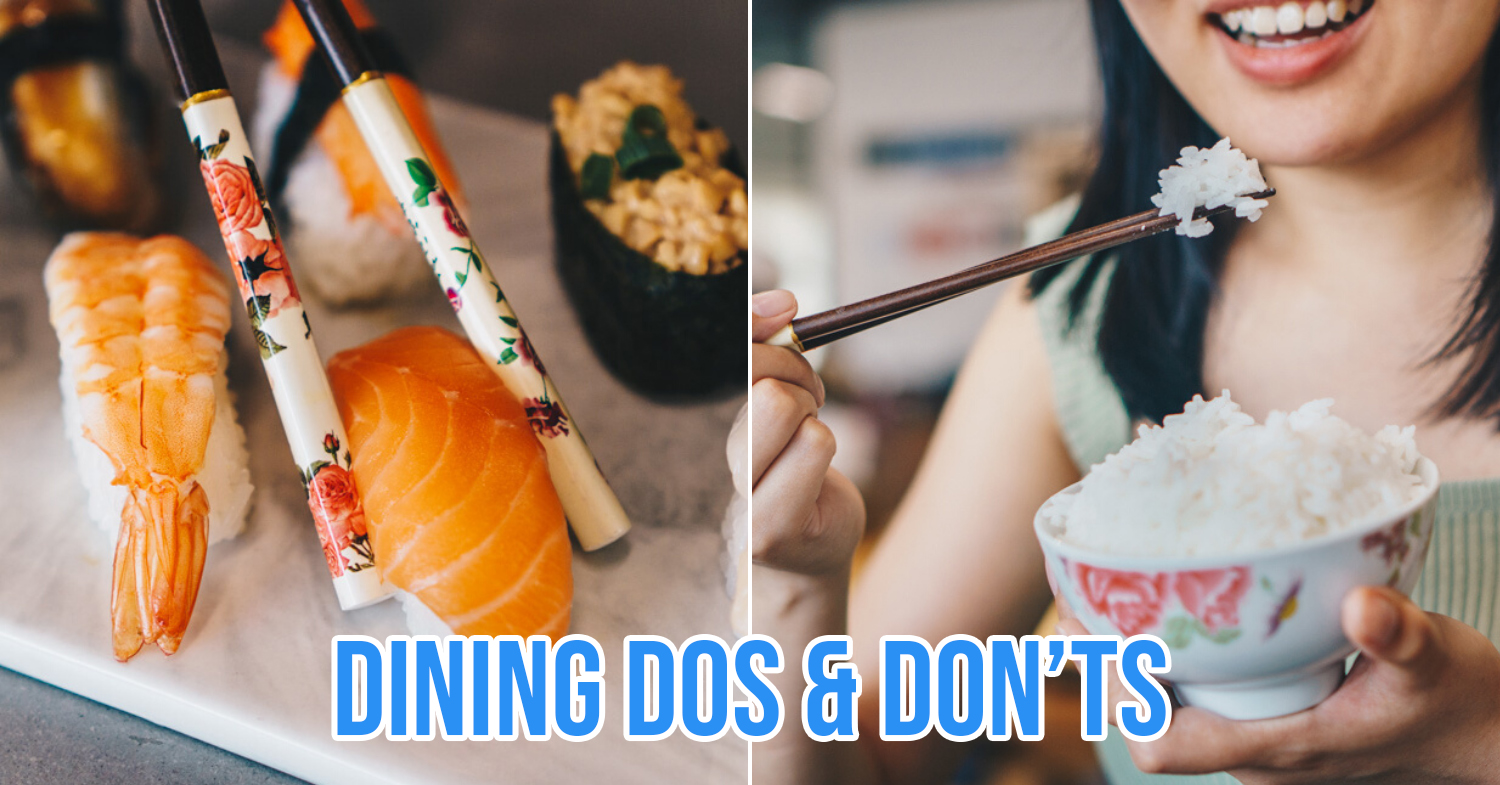
Eating out in Japan is an elaborate affair – there are specific rules for seating, using chopsticks, drinking, and even picking up the tab. In other words, mastering Japanese etiquette for dining is no easy feat.
That’s why we’ve put together a crash course and rounded up 22 important must-know dining rules. The article is arranged in chronological order for easy reference – from seating arrangements, before, during, and after a meal, to a bonus section on sushi etiquette.
Also, check out our Japanese nightlife etiquette guide here.
– Sitting Arrangement –
Traditional Japanese-style rooms are furnished with tatami mats – a type of Japanese flooring traditionally made with soft rush, straw, and cloth edging. However, modern tatami these days can also be made with polystyrene foam or wooden chipboards. Tatami seatings are usually found in older izakaya (Japanese bars) or restaurants, and comes with a list of important etiquette to follow.
1. Remove your shoes before entering
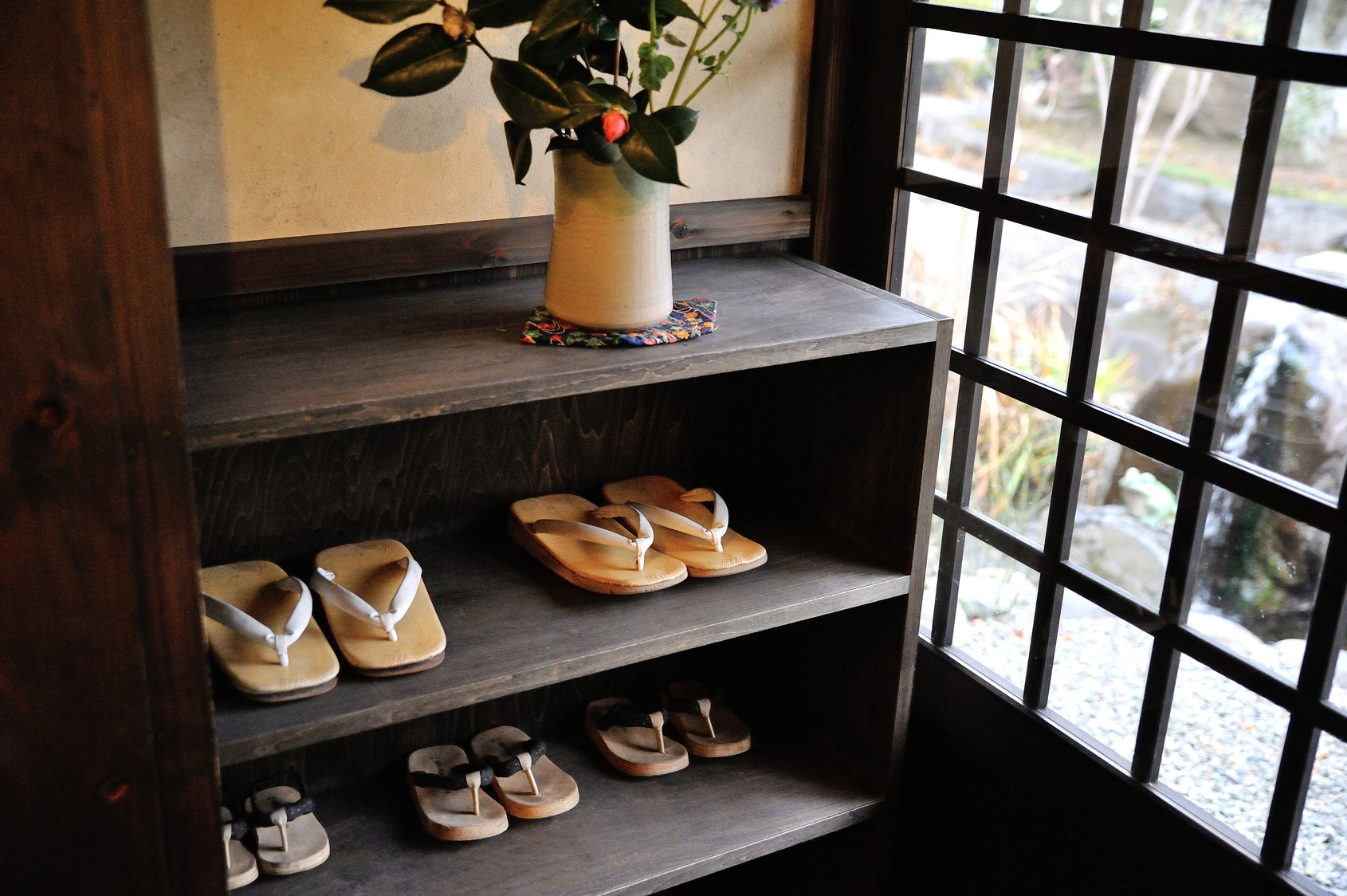
Geta sandals placed in a shoe rack
Image credit: jpninfo.com
You should never step onto tatami with shoes as the mats can be damaged. On top of that, it’s also expensive to replace.
You will be asked to leave your shoes outside of the dining room or in a designated shoe rack. Some restaurants may provide indoor slippers – you might even get to wear geta sandals, a type of traditional Japanese footwear with an elevated wood base.
Tip: If the restaurant has a washroom, you will find bathroom slippers outside of the toilet. Put on these bathroom slippers before entering the toilet, and remember to change back into your indoor slippers when you’re done – it’s a mistake many clueless travellers make.
2. Sitting position – seiza
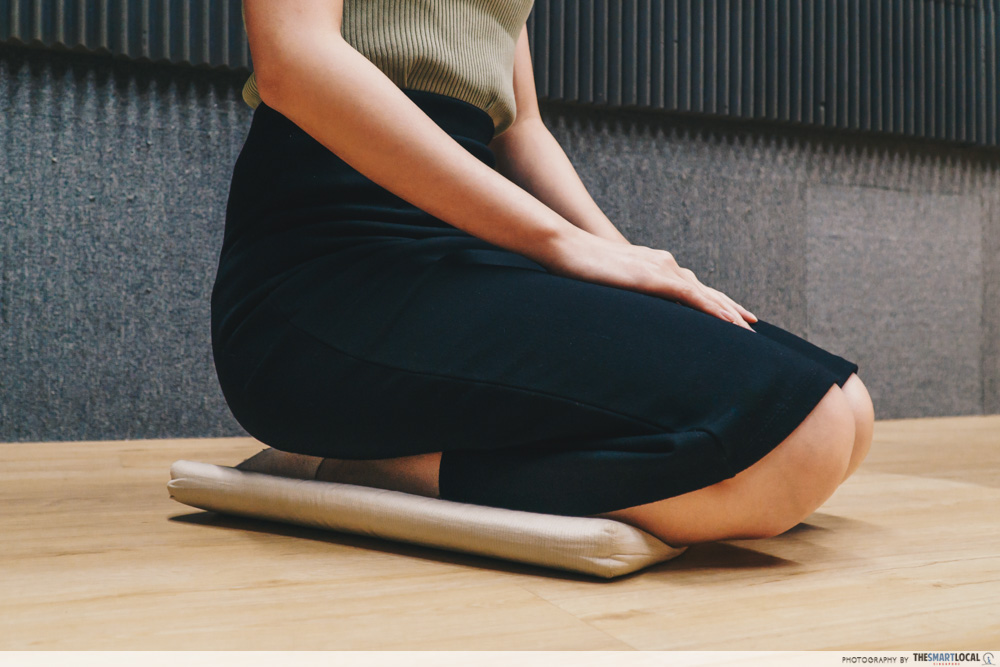
Seiza is a type of seating position used in a formal setting. You have to tuck your legs and feet behind your butt, such that the soles of your feet are facing up.
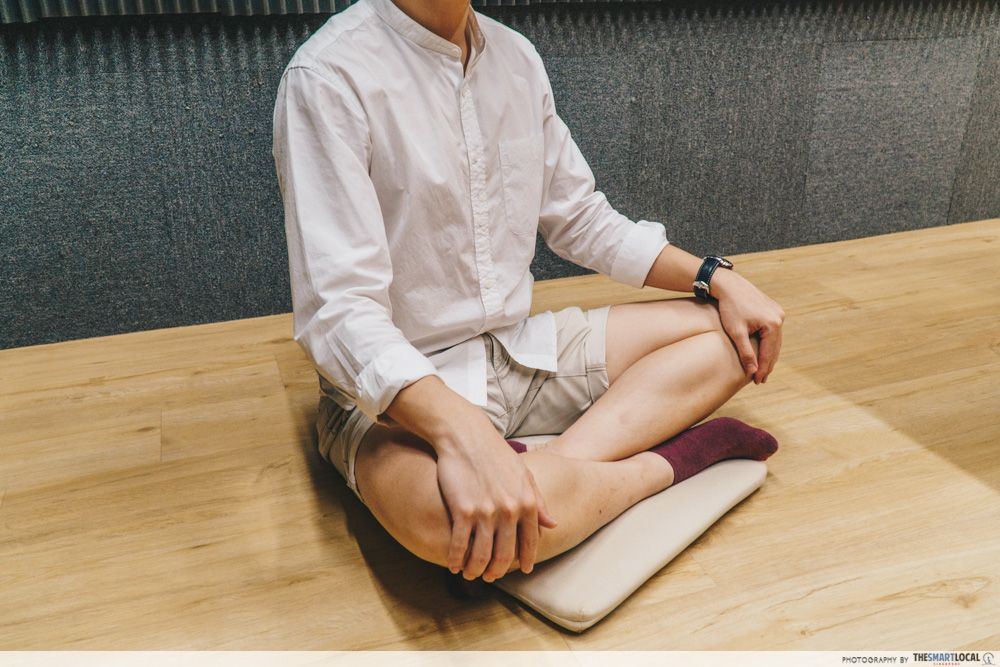
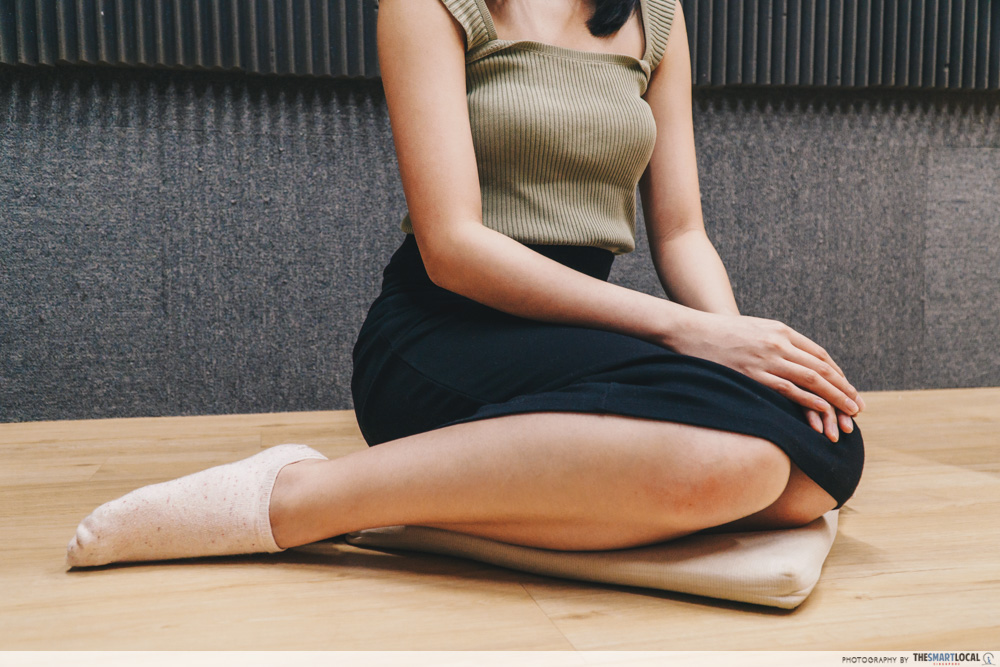
Seiza can get uncomfortable after some time, so most hosts will then encourage their guests to sit comfortably. There are 2 types of seating positions you can change to – sitting cross-legged for males and shifting both legs on one side for females.
3. The honoured seat – kamiza
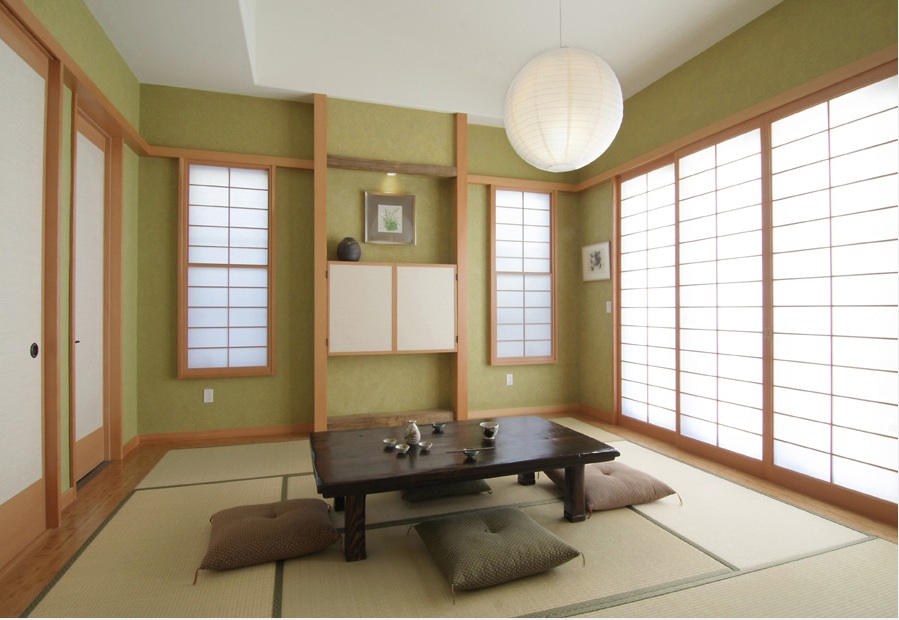
Image credit: konnitanaka.com
In Japanese seating, the most important person will sit at the ‘honoured seat’, called the kamiza. It’s usually farthest from the entrance and is easily distinguished by the tokonoma, a recessed space usually adorned with a painting or an ornament.
The host, aka the lowest-ranking guest, sits nearest to the entrance. This seat is known as the shimoza.
– Before a meal –
4. Wipe your hands with oshibori
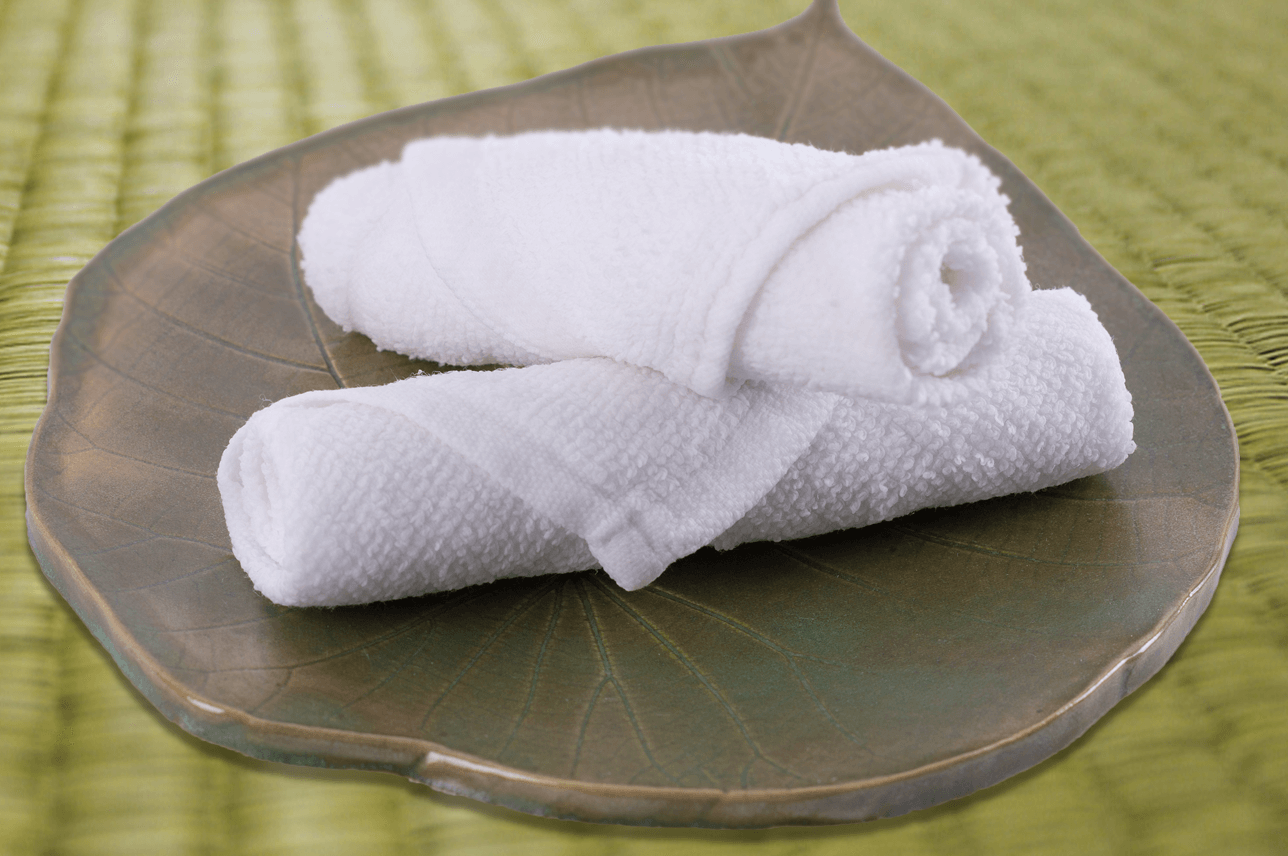
Image credit: xceedtowels.com.au
Before every meal, the server will pass you an oshibori (steamed towel) to wipe your hands clean.
Some foreigners misuse these towels by using it to wipe their faces – a common practice seen on long-haul flights. In Japanese restaurants, oshibori are meant for your hands only.
5. Wait for everyone first before eating
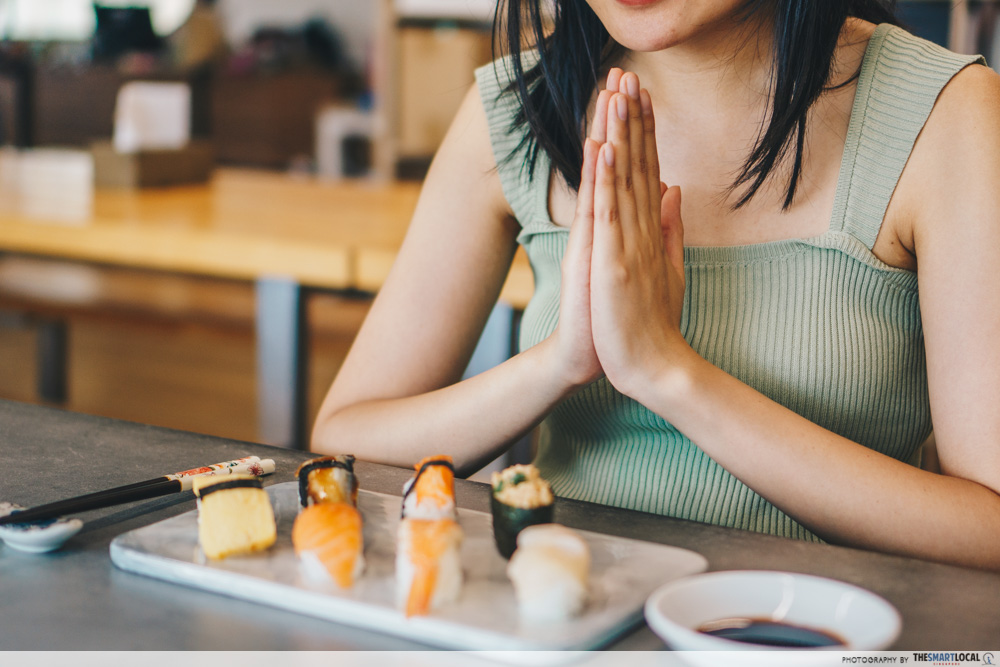
In Japanese: いただきます
How to pronounce: ee-tah-dah-key-mahs
After everyone’s meals have arrived, put your hands together and say “itadakimasu” before eating.
This translates to “I humbly receive”, but in a mealtime setting, it means “let’s eat” or “thanks for the food”. The Japanese do this to express their gratitude for the food and the people who prepared the meal.
– During a meal –
6. Don’t pour excess soy sauce into a saucer
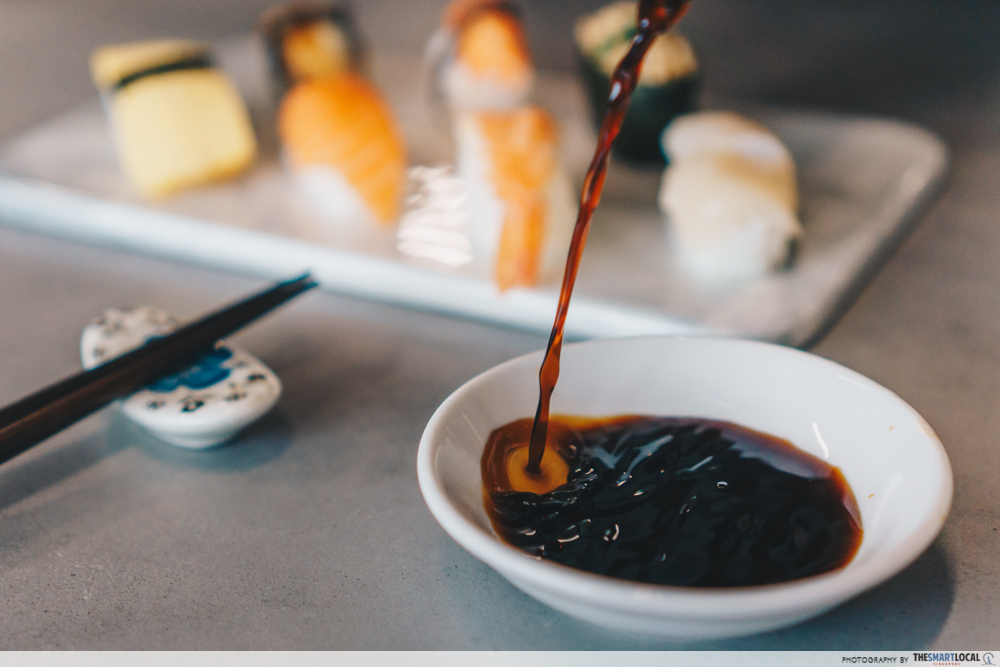
Pouring too much soy sauce into the saucer is a breach of Japanese etiquette and considered rude – you should only consume what you need. However, it is acceptable to leave a trace amount of soy sauce behind once you’re done with your meal.
7. Use communal cutlery to share food
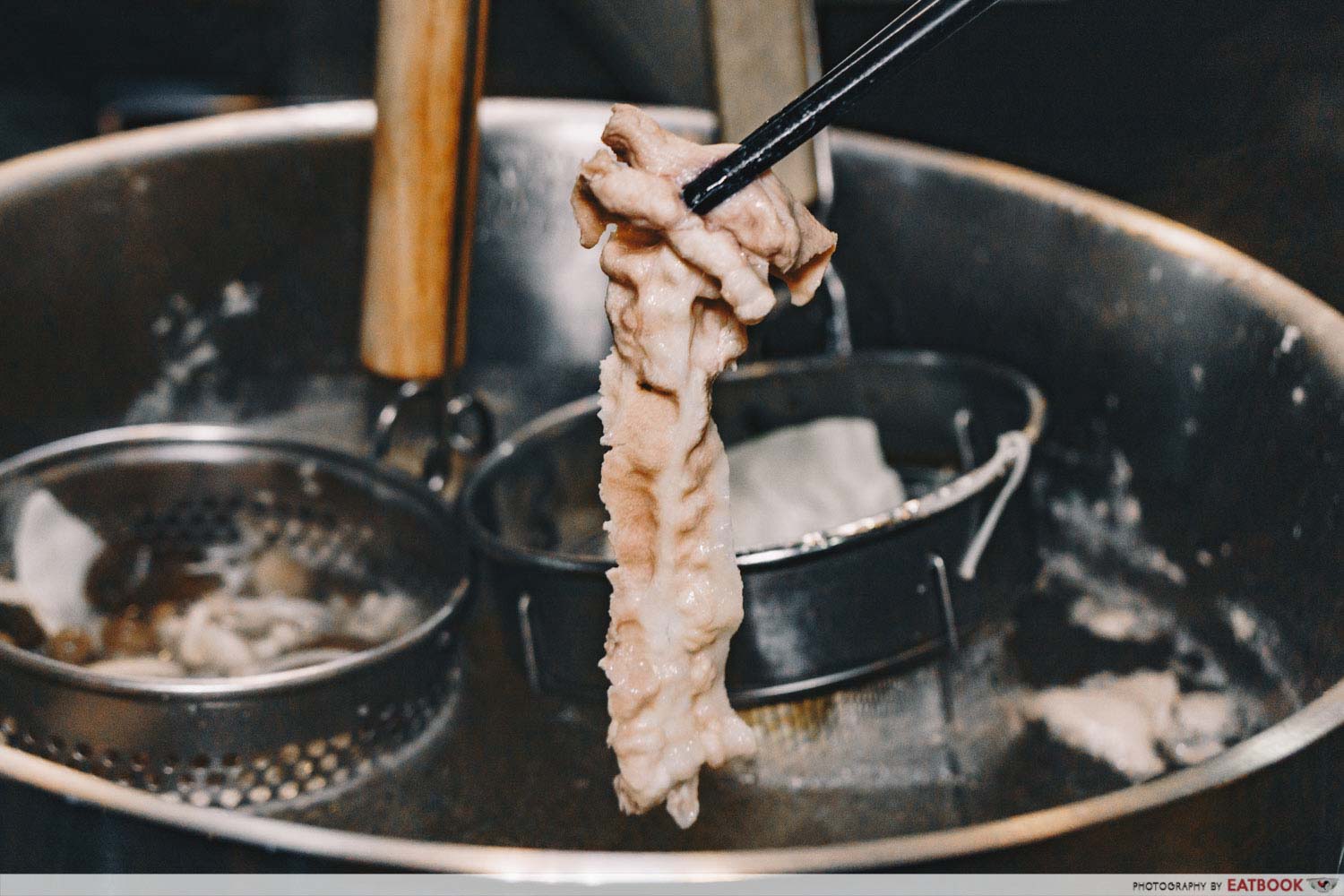
Image credit: Eatbook
Whether you’re flipping yakiniku (grilled meat) on a grill or dipping shabu-shabu (thin slices of meat or vegetable) into a shared hotpot, make sure to only use communal cutlery – tongs, ladle, skimmer, chopsticks, and so forth.
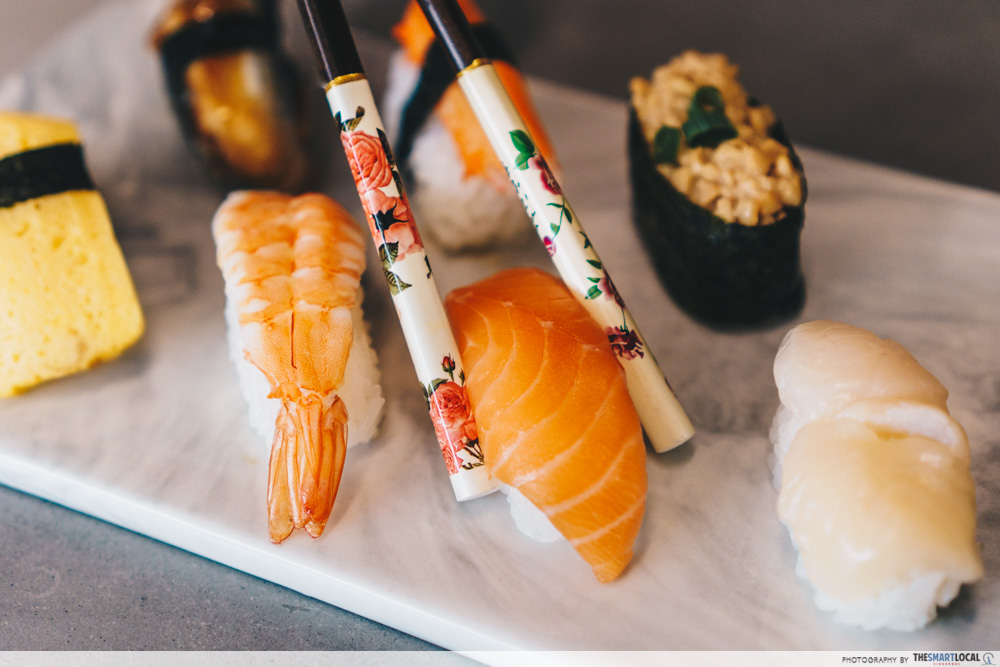
You can flip your personal chopsticks and use the opposite end to share food if communal chopsticks aren’t available. You can also ask for a new pair of chopsticks from the server.
Also, it is a taboo if you pass food with your chopsticks directly to someone else’s chopsticks. Called hiroi-bashi, this practice is only seen in a funeral where a family member picks up the deceased’s bone fragment and passes it along to the next person.
8. Hold and eat from your bowl
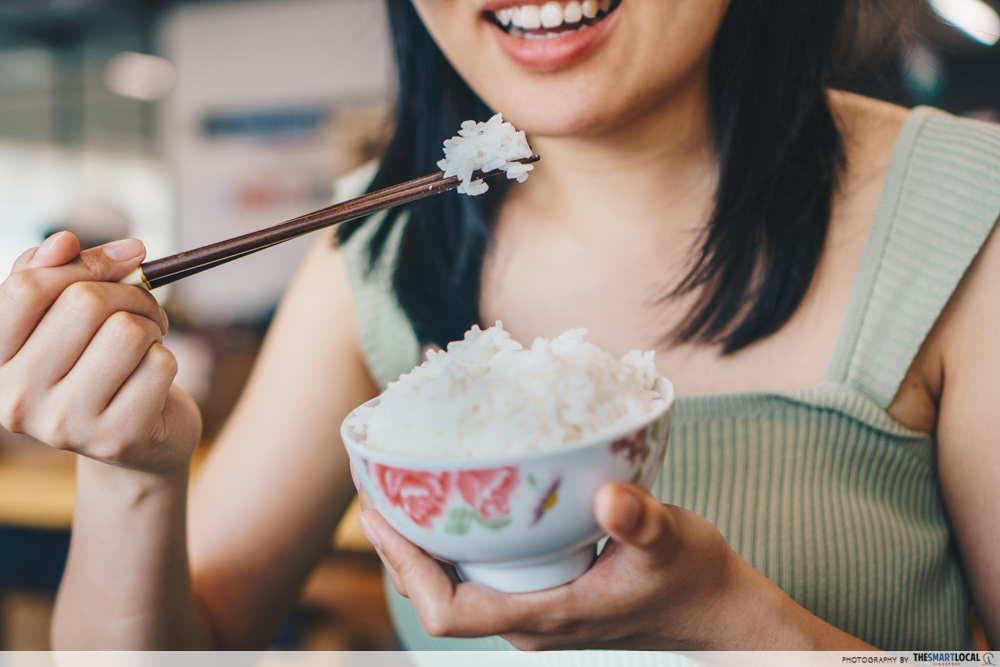
Before tucking into your meal, pick up the bowl you’re eating from with one hand and bring it close to your mouth. Doing so helps prevent food from falling off.
Never salvage the situation by rescuing fallen food off your clothes or on the floor – even if you subscribe to the 5-second rule. To the Japanese, it’s bad manners.
9. Never raise your chopsticks above your mouth
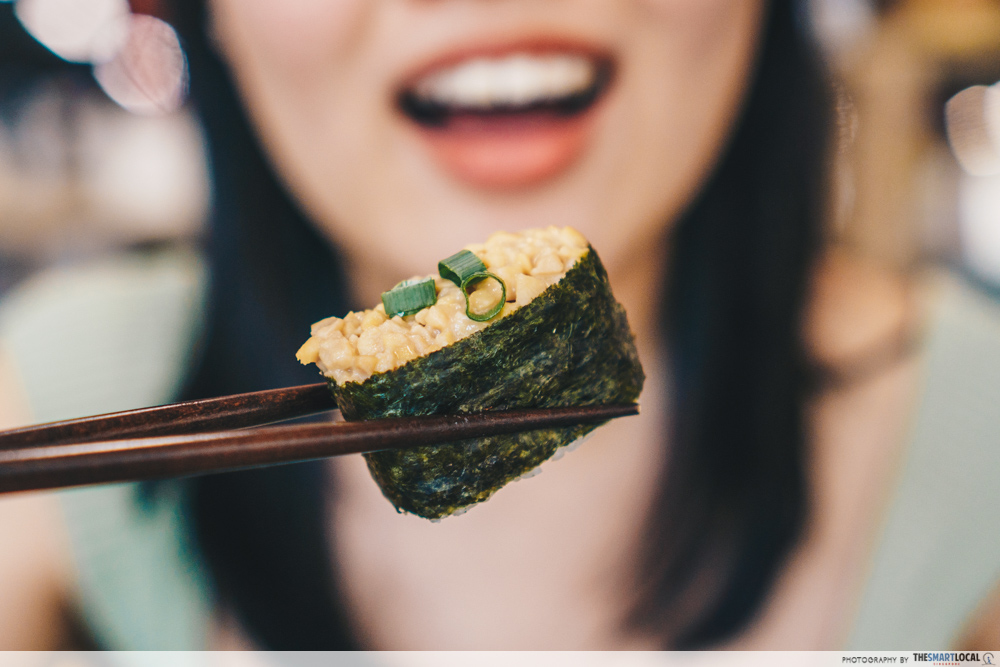
The Japanese stand by the belief that the highest point your chopsticks should reach is your mouth. Any place higher than that is strictly unacceptable.
10. Do not chew, lick or bite on your chopsticks
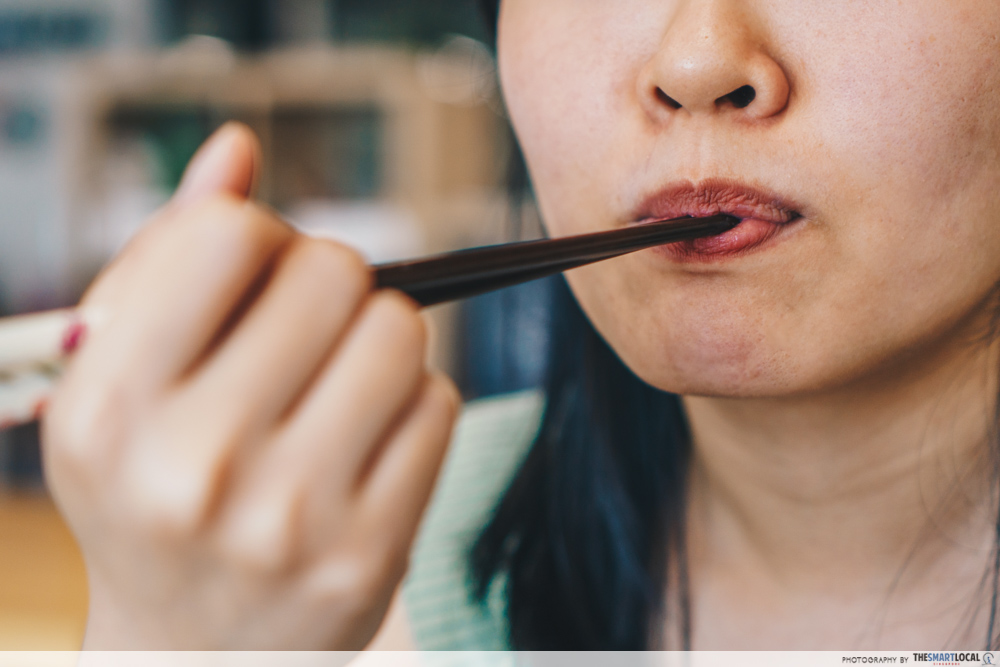
If you’re used to chewing, licking or leaving chopsticks in your mouth, make sure to ditch that nasty habit before you jet off to Japan. This is one important chopstick etiquette that the Japanese are particular about. Doing otherwise is seen as offensive.
11. Slurp your noodles loudly
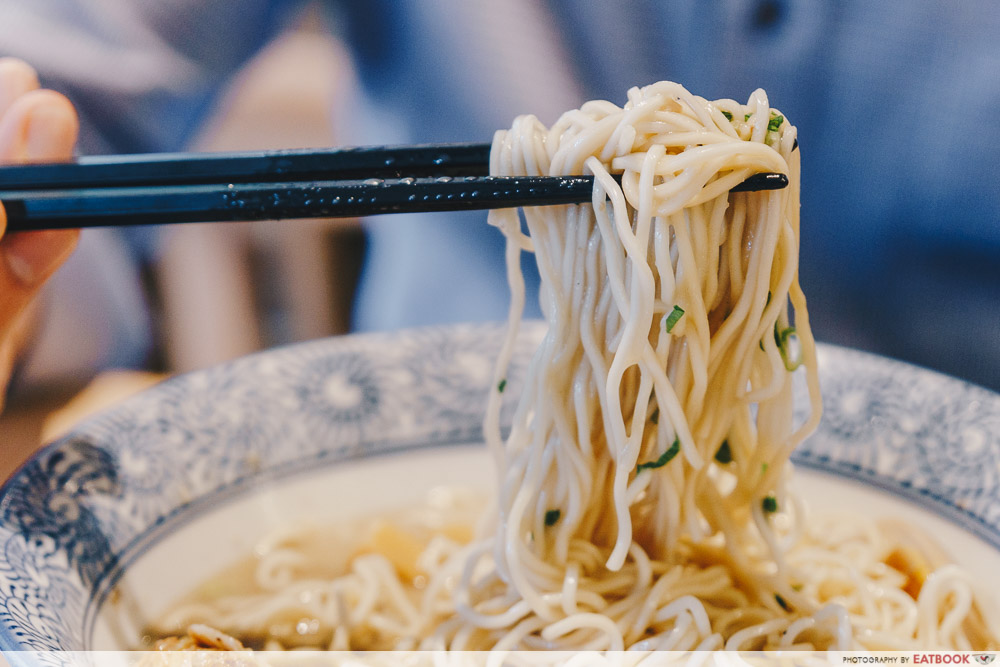
Image credit: Eatbook
The Japanese may be very particular about noises but there is one exception – slurping noodles. Ask the locals and 9 out of 10 will say that slurping loudly enhances the flavour of the noodles.
If you’re self-conscious about speaking in Japanese, inhale noodles with as much gusto as you can. This is a way to compliment the chef for their superb cooking skills. Otherwise, you can also learn these Japanese dining phrases to maximise your foodie experience.
12. Eat your soup with chopsticks
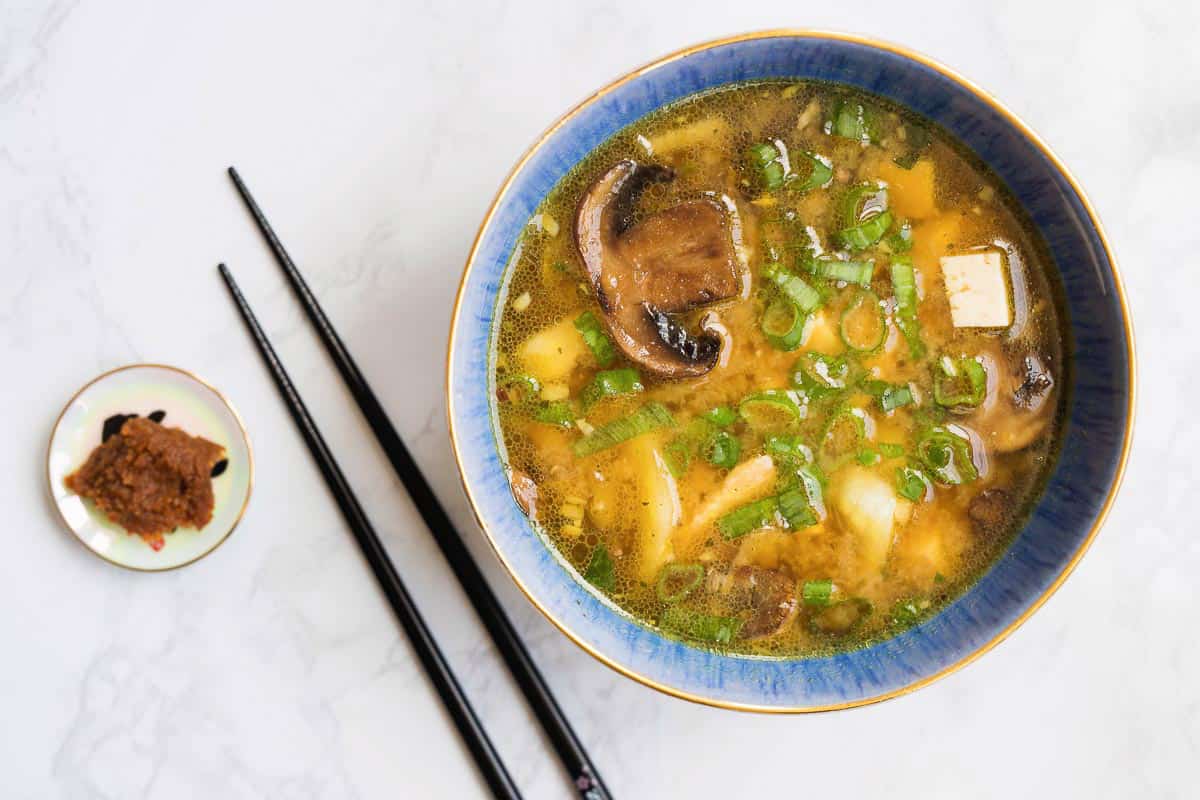
Image credit: happymoneysaver.com
We know this sounds counter-intuitive, but soups in Japan tend to have a lot of ingredients. For example, a simple bowl of miso soup may contain tofu, seaweed, shrimps, clams, and much more. The Japanese pick these solid ingredients up with their chopsticks, and drink the rest of the soup directly from the bowl – no spoons required.
Never ever stab your food with chopsticks. The locals may not take this too kindly so don’t be surprised if you find murmurs of displeasure around you when you do so.
Tip: If you find it hard to use chopsticks, request for a fork instead.
13. Dispose of shells and bones inside your bowl
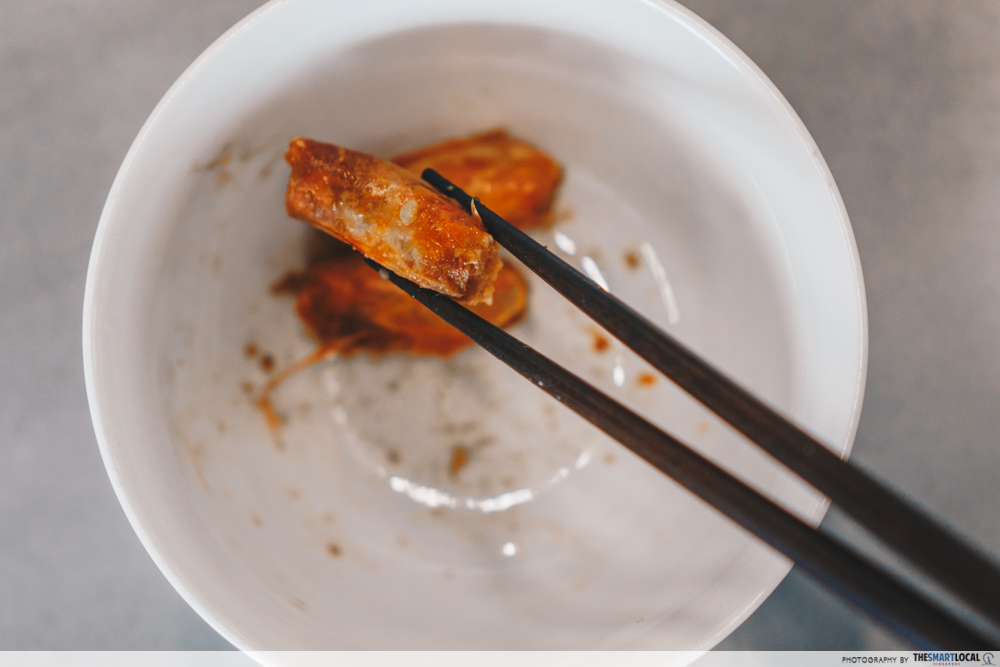
Disposing of shells, bones, and other items you don’t want to eat can be a tricky affair, especially if there aren’t any designated bins on the table. When that happens, leave these items inside a bowl.
14. Finish your food
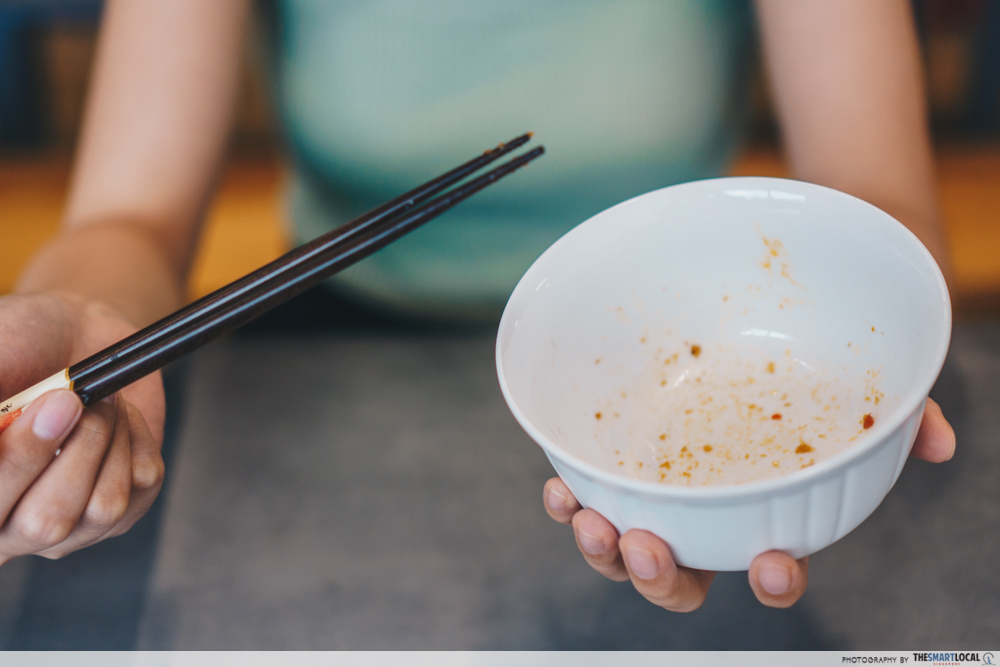
Saying “itadakimasu” isn’t the only way to express your gratitude – you can also show it by polishing off your bowl. If you’re too full to finish your meal, sweep the leftovers to one side of the bowl with a pair of chopsticks.
– After a meal –
15. Show your appreciation
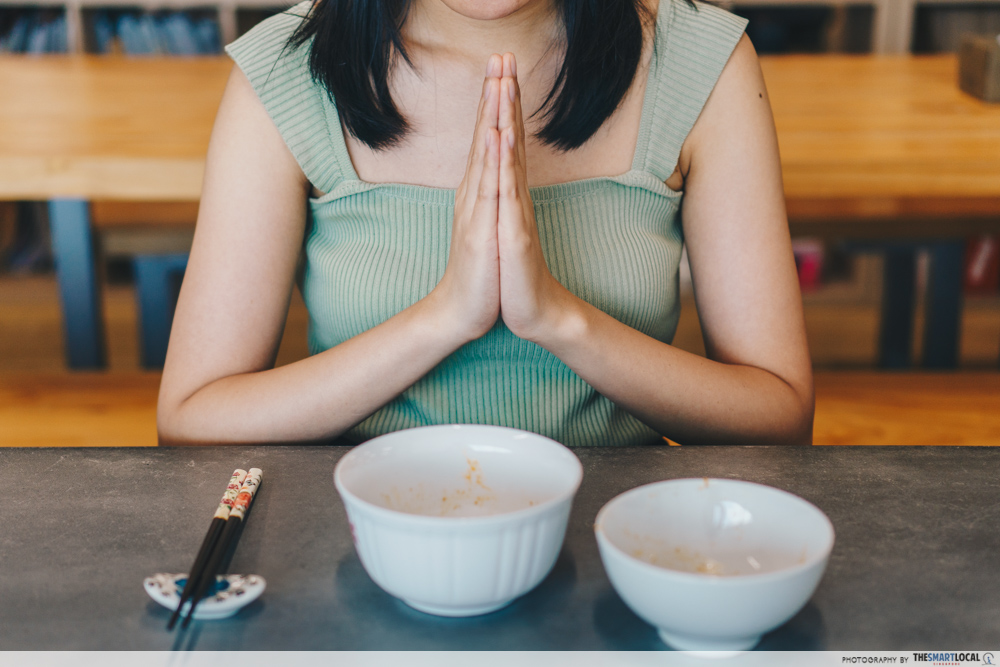
In Japanese: ごちそうさまでした
How to pronounce: go-chee-soh-sah-mah desh-tah
Repeat rule #5 by clasping your hands together after the end of a meal. Instead of saying “itadakimasu” this time round, replace it with “gochisosama deshita”. This means “thank you for the meal”.
16. Return your dishes and cutlery to their original positions
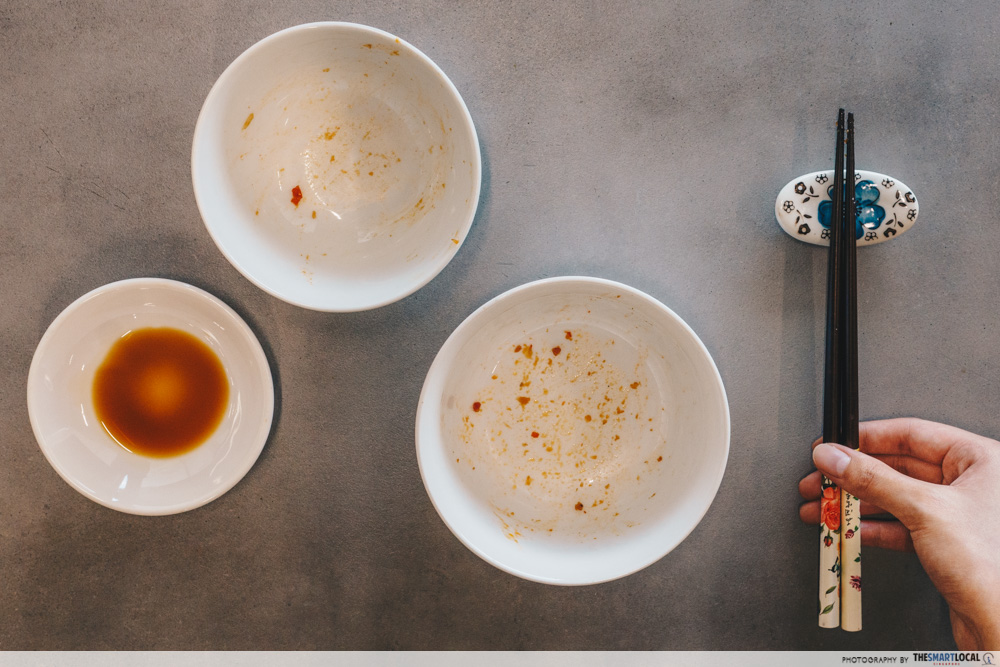
Patrons with goldfish memory might find this tricky because you’re expected to return your utensils and cutlery back to its original positions after eating.
Should memory fail you, just remember to at least return your chopsticks to the hashioko (chopstick rest). If you’re using a pair of disposable chopsticks, slot it back into its wrapper.
Tip: Never cross your chopsticks into an ‘X’ shape as it is symbolically related to death.
17. The person who invited everyone pays for the meal
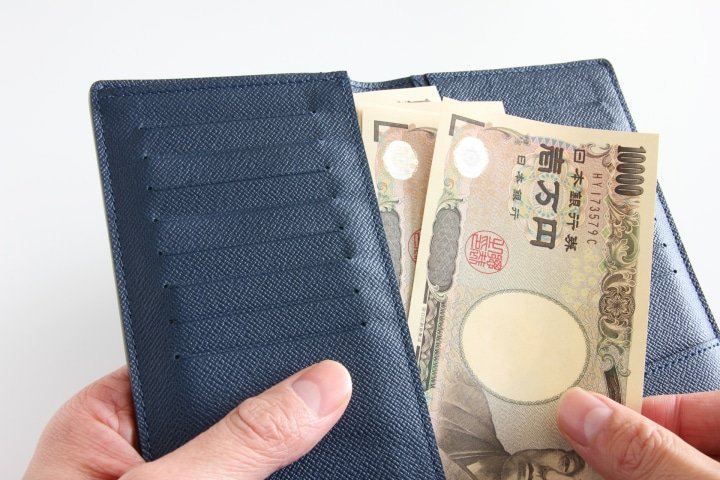
Image credit: matcha-japan.com
As a rule of thumb, whoever initiated a gathering should foot the bill. There are also instances where the oldest person or the person with the highest ranking in the group pays for everyone.
It’s easy to rack up the bill as a result, but the Japanese are willing to make the trade-off as such generosity is a form of ‘saving face’. In other words, they maintain their dignity and take pride in becoming a reliable figure others can depend on.
18. Paying for the bill – place your money on a small tray
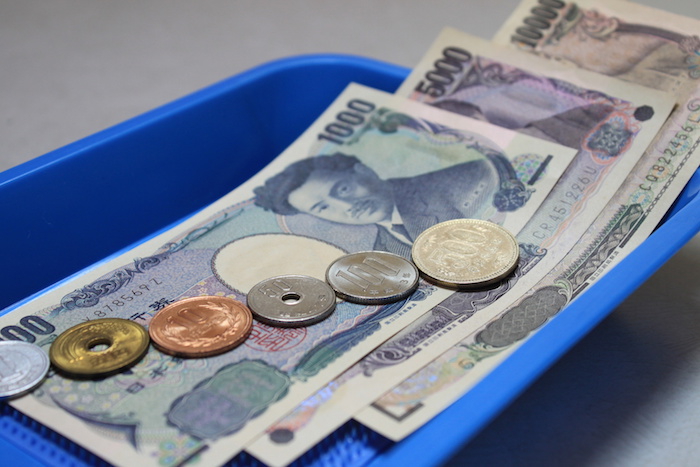
Image credit: jpinfo.com
At every counter, you’ll find a small tray sitting atop a table. Place your money on the tray instead of handing it to the cashier directly.
The tray has several functions – this prevents uncomfortable encounters such as accidentally touching the other person’s fingers during the transaction. It is also easier to pick up coins as most trays come with a bumpy base.
Tip: If you can’t find any trays in sight, hold your payment or receive your change with both hands.
19. Tipping is not encouraged
Japan does not practise tipping. Leaving excess money behind may warrant an odd look from the cashier or worse, send them on a wild goose chase down the street so they can return your money after you’ve exited.
– Japanese etiquette on eating sushi –
Just like how you would associate a bowl of savoury laksa with Singapore, the same could be said for Japan when it comes to sushi. Keep in mind these 3 essential rules so you can eat this famous dish without offending anyone.
20. Eat a piece of sushi in just one bite
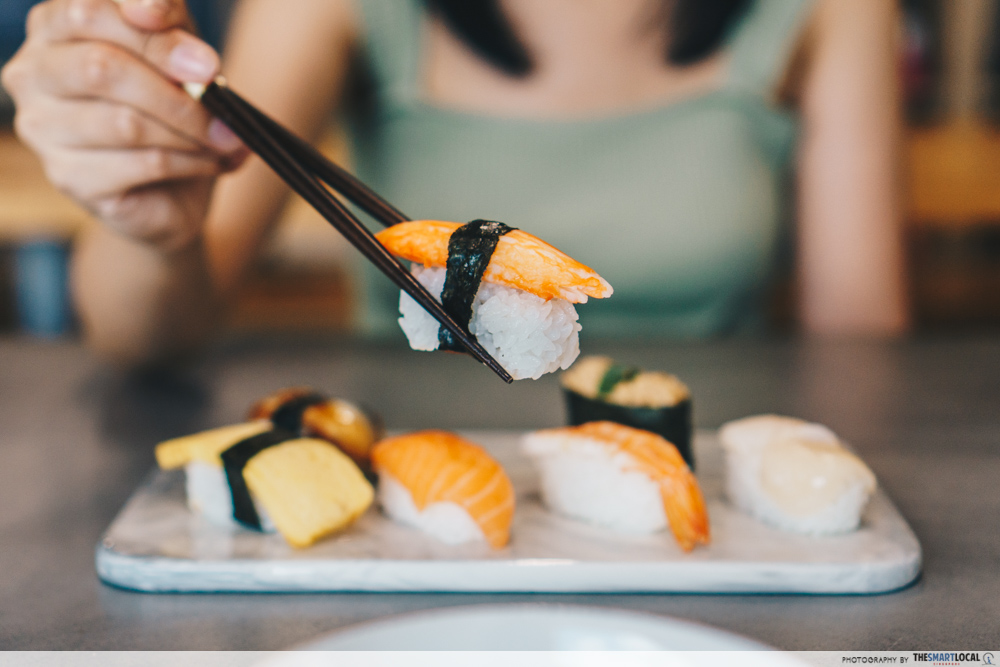
A qualified sushi chef makes sure that each sushi is bite-sized so you can pop it into your mouth in one go. Biting a piece of sushi into half or more is a form of disrespect to the chef who made it.
Tip: The best way to savour the taste of sushi is to flip it so that the topping is against your tongue.
21. Adding soy sauce or wasabi to your sushi
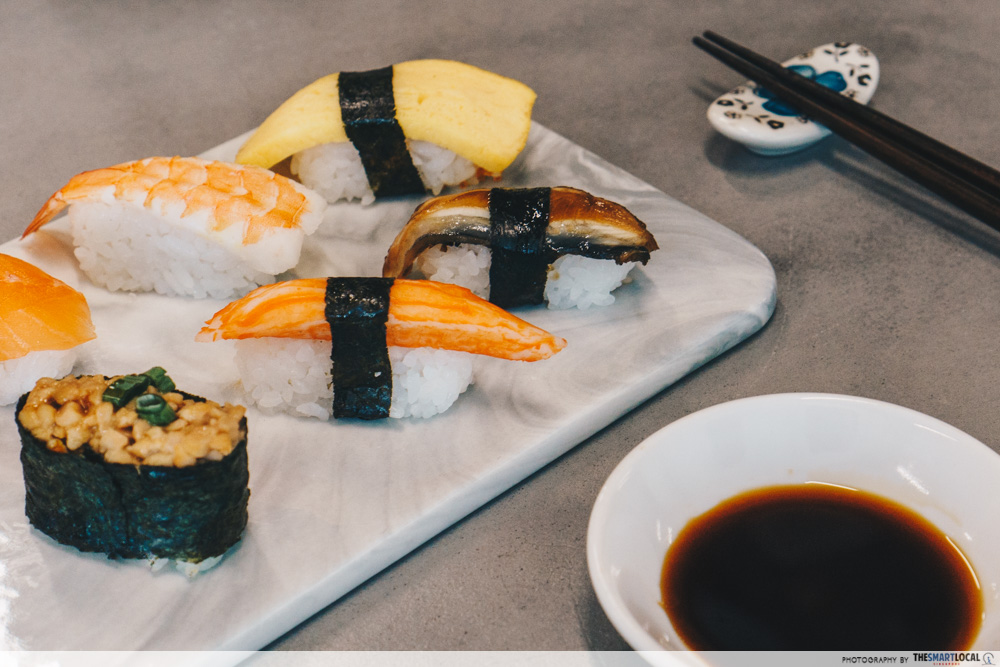
Depending on where you’re having your sushi at, there are different ways to eat sushi.
Diners are expected to consume sushi as is in fine dining establishments. Adding condiments such as wasabi and soy sauce would upset the flavour of the sushi and the chef who has spent time making it.
But if you’re eating at a casual sushi restaurant, you can add soy sauce and wasabi to your own liking by following these rules.
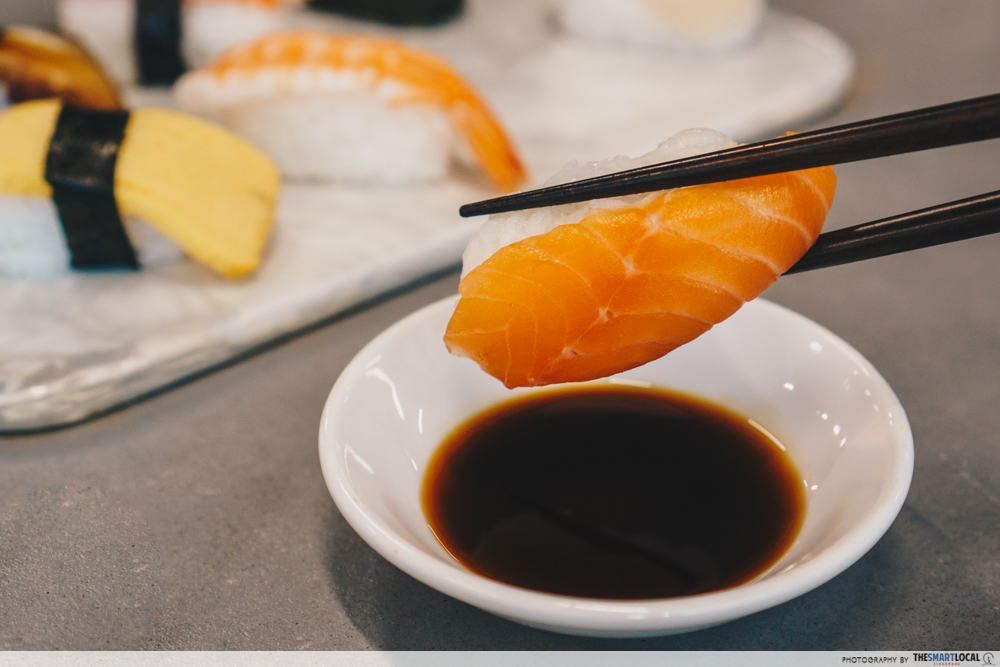
For nigiri-zushi (a slice of raw fish placed on vinegared rice), flip the sushi sidewards or upside-down so that you’re only dabbing the fish, not the rice, with soy sauce.
Avoid adding any other condiments if the sushi is already seasoned.
Tip: You should never mix wasabi with soy sauce. Proper Japanese etiquette dictates that wasabi should be added sparingly directly onto a piece of sushi instead.
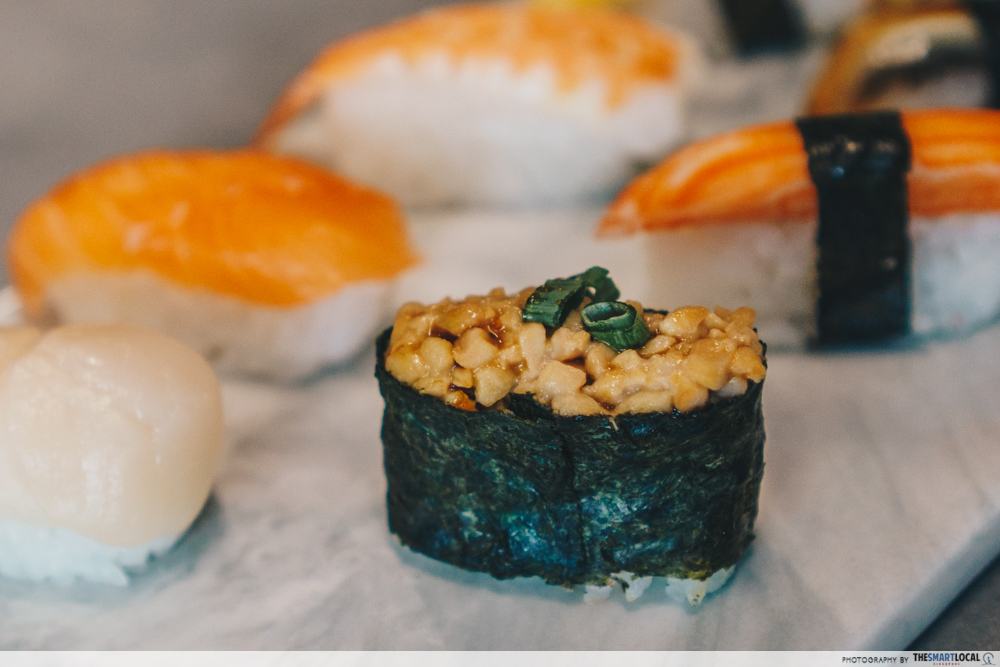
Gunkan-zushi is easily identified by its nori (seaweed) wrap around vinegared rice. Pour a sparse amount of soy sauce over the sushi instead of dipping it like you would with nigiri-zushi.
Tip: Don’t add soy sauce into your rice as it will result in a loss of stickiness, making it difficult to pick up with chopsticks.
22. Do not eat ginger while chewing on a piece of sushi
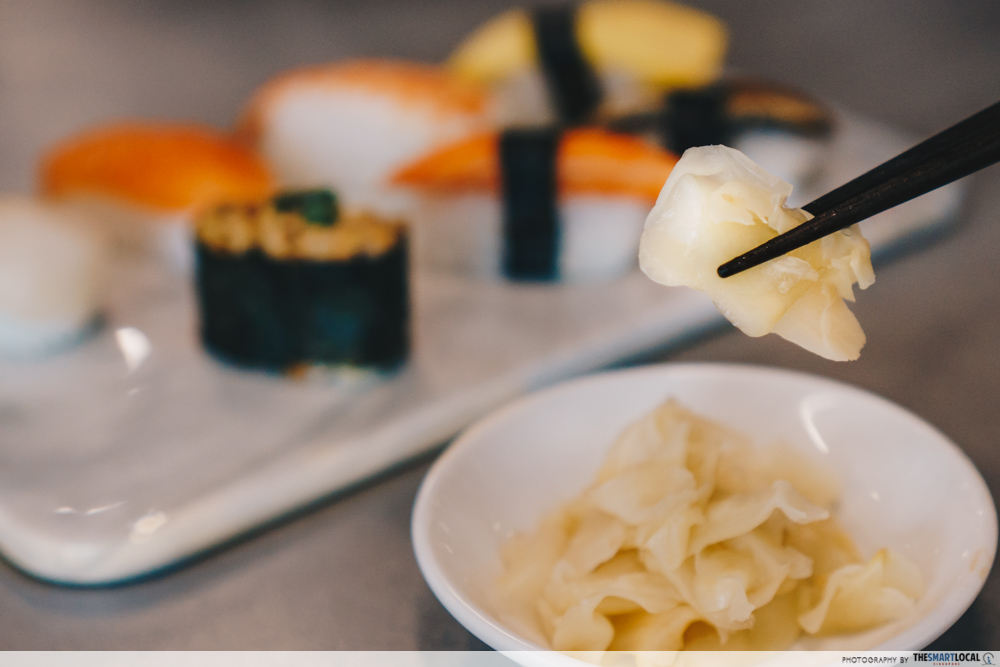
In Japan, pickled ginger, also known as gari, acts as a palette cleanser. You should only have it in between bites and not together with your sushi.
Eat out like a Japanese local
Travellers new to Japan may be wary of eating out since there are so many dining rules to look out for. However, the Japanese are generally very understanding – if you’re able to nail the basics explained in this crash course, there’s no need to worry.
P.S. If you’re in doubt, you can always sneak a peek at the people around you to cross-check.
Check out these articles on your next trip to Japan:
- Japanese phrases for eating out
- Top izakaya in Tokyo
- Ramen places better than Ichiran
- Underrated Japanese snacks as souvenirs
- Giant food dishes in Japan
Photography by Kurtis Ma